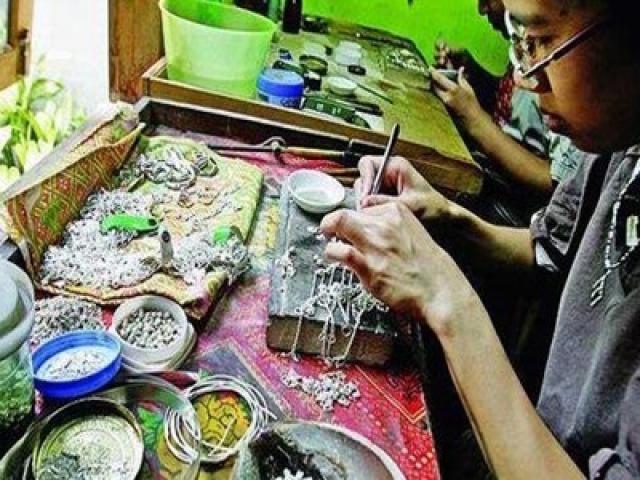
The Silver Kotagede history started when Panembahan Senopati Mataram ordered courtiers to make gold and silver jewelery. The emergence of the silversmith conjunction was established in Mataram Kotagede in the 16th century AD. There was evidence to suggest the art of silver, gold, and metal. It is known since the 9th century AD. In the inscription in Central Java, the terms contained goldsmith, silversmith, and blacksmith. The development of silver is experiencing a golden period between 1930 and 1940 with the emergence of new corporations, improved quality, and new motifs.
The silver industry began to evolve and tap into the world market when Kotagede visited the Dutch and ordered goods for European households with silver material. The goods in candlesticks form, tableware, drinking, ashtrays, cups, and napkins. The place of jewelery with distinctive European style motifs is dominated by the leaves, flowers, and lungs, and it was a desirable order. The various orders have come with ever-increasing numbers. To maintain and improve product quality, the Dutch government established the institution Beverdering Stichting van Kenst Ambacht Yogyakarta. Institutions provided training in techniques of making silver and the development of market access. The activities included the Jewellery Fair in Japan in 1937 and the America Fair in 1938.
After experiencing the ups and downs in business, the silver craft industry keeps running. Entering the Kotagede area means being ready to visit the Silver area. The visitor could not just pick and buy souvenirs but also watch the manufacturing process. The production process begins with the melting of pure crystalline silver, mixed with copper, with a silver content standard is 92.5%. Silver melted and liquid, it will print as desired.
The second process is called print. The next process is banging printouts to get the shape style, and the process requires skill level. After having the shape, then carved to obtain the motif. This process requires high expertise, once carved and then assembled. The final process is to create a shiny finish and expose the fallen. Standard quality silver is 92.5% if less than that silver has not been worth mentioning. Standards are set up to maintain product quality. The price ranges determine the level of silver per gram and the difficulty of manufacture.
